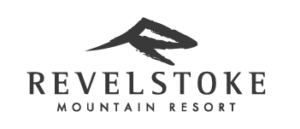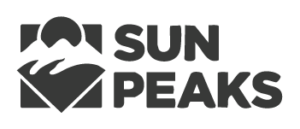Choosing the best ski instructor course isn’t about picking the most popular programme, it’s about finding the one that fits you.
Are you doing this as a career move or the ultimate gap year? Are you on a budget or aiming for long-term global opportunities? You’ve probably spent quite a bit of time researching instructor courses. You want to do it but can’t decide which direction to go. Of course, you’ll never regret becoming a ski instructor, but knowing what experience you want is a great place to start in order to choose the right one.
Questions To Ask Yourself
Before you compare qualifications and destinations, take a moment to ask:
- When are you free to travel?
- What’s your total budget?
- Is this a career path or an adventure?
- How good a skier are you?
- Where do you dream of skiing or working?
Your answers will help narrow down your choices fast.
When Can You Go?
Your availability determines where you can train.
| Hemisphere |
Season |
Popular Locations |
| Northern |
Nov – Apr |
Canada, Europe, Japan |
| Southern |
Jun – Sep |
New Zealand, South America |
If you’re free over the winter months, Canada and Europe offer incredible training opportunities. If summer works better, New Zealand is the top Southern Hemisphere destination with well-established training schools.
What’s Your Budget?
Ski instructor courses can range from a few thousand pounds to over £10,000. Make sure to factor in:
- Course fees
- Accommodation & food
- Flights & travel insurance
- Equipment rental or purchase
- Spending money
Most providers bundle core costs like lift passes and training, but extras like meals or visa fees vary. It’s worth putting together a comparison table – Contact us for a free template to get you started.
Gap Year or Career Move?
If you’re planning a one-season adventure, you might prefer:
- A shorter Level 1 course (3-4 weeks)
- A focus on the experience, not just certification
- Resorts with amazing nightlife, deep powder, or a social atmosphere
Popular for gap years:
- Canada – amazing snow, welcoming culture, cheaper courses.
- Europe – iconic après ski and a huge amount of terrain
- NZ – winter course in the European summer
Or try an Internship – qualify and work in the same season. Lower cost upfront, and you’ll gain real-world experience (just be aware of visas and your eligibility – use our free guide!). Some providers also offer a guaranteed placement once you have completed your internship!
How Good a Skier Are You?
Your current skiing ability plays a big role in choosing the right instructor course. You don’t need to be an expert – but you do need to be confident on the slopes.
Ask yourself:
- Can you ski confidently on red or blue runs?
- Are you comfortable linking turns consistently and controlling speed?
- Have you skied off-piste or in variable conditions?
Beginner to Intermediate?
If you’re still working on technique or have only skied a few times, choose a course with pre-training or a longer level 1 & 2 programme. These are designed to build up your skills while preparing you to qualify.
Confident Skier?
If you’re already confident on varied terrain, you may be eligible for a shorter fast-track course or an internship, especially if you’re aiming for a Level 1 qualification and to work the same season.
Important: Most Level 1 courses expect you to arrive with intermediate ability. You’re learning how to teach, not how to ski from scratch.
Career-Focused: Long-Term Thinking
If you’re planning to make a genuine career out of ski instructing, whether that’s teaching year after year in Canada, moving between hemispheres, or progressing into coaching and training roles, your choice of course is critical. You’ll likely need:
- Level 2 minimum or Level 3 qualifications
- A governing body that aligns with where you want to work
- Programmes that potentially offer pathways to sponsorship or ISIA Stamp (although this is becoming less important)
You’ll want to pick your course carefully and keep your working holiday visa options open, particularly for countries like Canada, Japan and New Zealand. Unless you have a European passport then treat your work visas like gold dust.
Choosing the Right Location
When comparing destinations, ask yourself:
- How important is snow reliability?
- Do you want big mountain terrain or smaller resorts?
- Is nightlife a factor?
- Would you prefer to live in a resort or a nearby ski town?
Examples:
- Canada: Consistent snow, resort-owned operations, and friendly visa routes.
– Revelstoke
– Sunpeaks
– Panorama
– Big White
- Switzerland, Verbier: Big name, big après. Great off-piste.
- New Zealand. Cardrona & The Remarkables: Friendly and flexible, perfect for summer training.
What Qualification Should You Choose?
Here’s a breakdown of the main instructor systems and where they shine:
BASI (British Association of Snowsport Instructors)
- Level 1: Teach indoors or on dry slopes in the UK
- Level 2: Work on snow in Canada, Europe, Japan, NZ
- Level 3-4: Opens up global roles, especially in France (with extra tests)
Best for: Working in Canada, Europe or UK
Note: Brexit makes EU work trickier, but still possible with BASI Level 2+
Explore BASI ski instructor courses ➝
CSIA (Canadian Ski Instructors’ Alliance)
- Level 1: Teach beginners on the mountain right away
- Level 2: Required for most international resort jobs
- Level 3-4: Needed for long-term employment & sponsorship in Canada
Best for: Working in Canada, North America, or resorts that value CSIA fast-track options
Bonus: Some internships include a guaranteed job after Level 1
Explore CSIA ski instructor training ➝
NZSIA (New Zealand Snowsports Instructors Alliance)
- Level 1-3: Teach from beginner to expert, globally recognised
- Specialisations: Coaching, freeride, kids, avalanche training
- Summer-season courses in NZ (train June-Sept)
Best for: Southern Hemisphere courses or working in English-speaking countries
Flexibility: Start your training in NZ and teach in Europe or North America
View NZSIA-aligned programmes ➝
What Level Do You Need?
| Your Goal |
Recommended Level |
| Just want the experience |
Level 1 |
| Teach in resorts abroad |
Level 2 |
| Long-term international career |
Level 3+ (ISIA) |
Most full-time instructors aim for Level 2 or 3. Reaching Level 3 often opens doors to sponsorships and full-time roles in Canada, Japan, and Europe.
Internship or Standard Course?
| Course Type |
Pros |
Cons |
| Internship |
Work the same season, lower upfront cost. Full Season experience. Work experience on your CV. Easier to find work afterwards. |
Must pay for living once you start work. Less training than a course. Its a proper job with an employer, stricter environment |
| Standard |
More in-depth training, living costs covered. Simple season to plan, no visas needed, all costs covered upfront, less budgeting worries.Focus on improving skills |
Higher upfront price. Lacks paid teaching experience. A little harder to find work afterwards in comparison to Internships |
| Train & Work |
Cheapest option! Work straight after your Level 1 completion. Gain experience straight away and start earning to cover your course costs |
No Rep, less support, often in smaller resorts. Busier season! |
Top Tip: Save your working visa for Level 3 if you’re thinking long-term. Many people start with a standard L1+L2 course and progress later to a Level 3 Internship
What’s Next?
Once you’ve narrowed your options:
- Compare packages and what’s included.
- Read reviews or speak to past students.
- Book early. Spots (and visas!) can fill quickly. Obtaining a visa from July onwards can be a nail-biting experience.
- June onwards: Expect limited spaces on Internship programmes.
- Resorts start their interviews in July/August too, so don’t wait till after your results or August to make a decision!
Ready to Take the Next Step?
At Winter Sports Company, we run Level 1-3 ski instructor courses and internships in Canada, Europe and New Zealand. Whether you’re taking a gap year or switching careers, we’ll help you find the right path.






